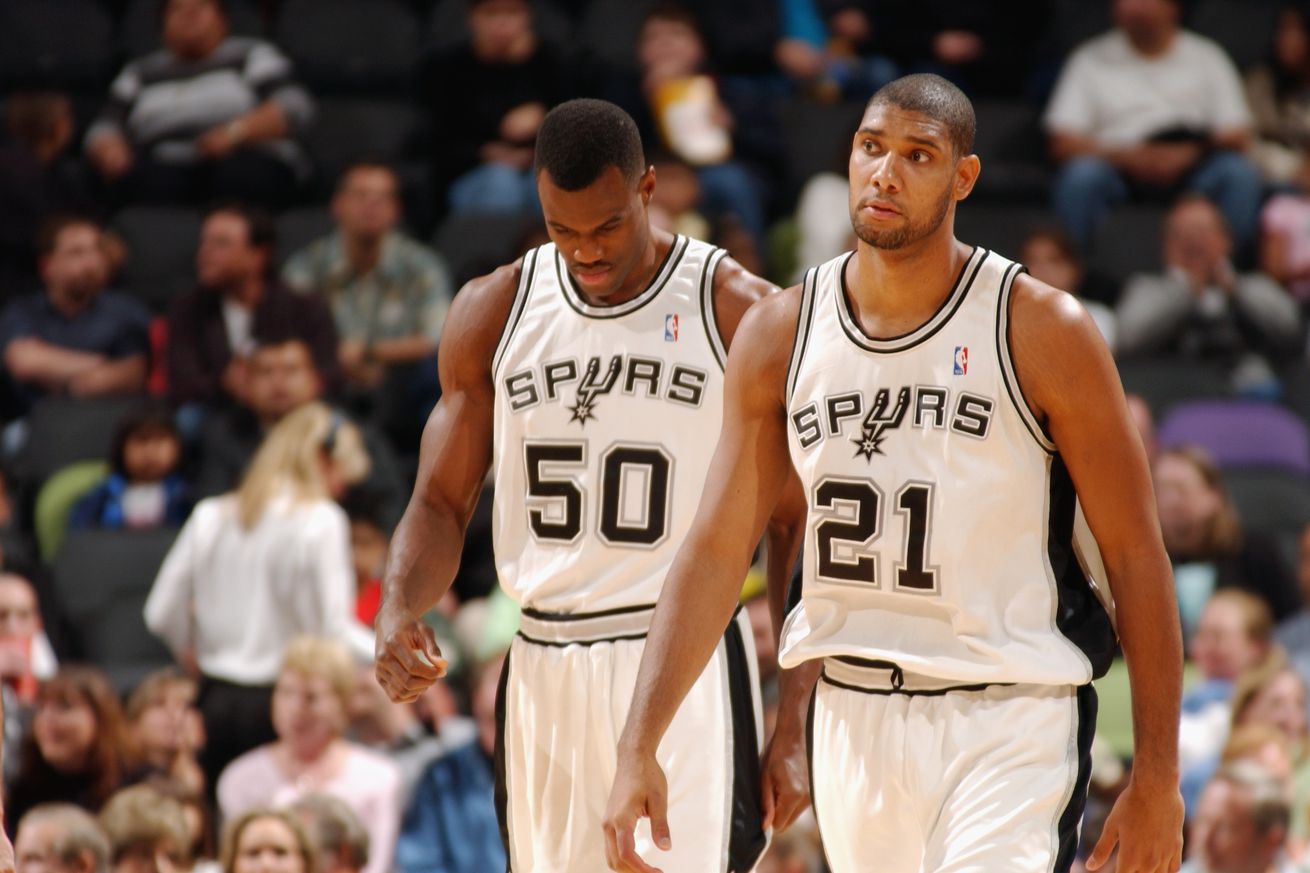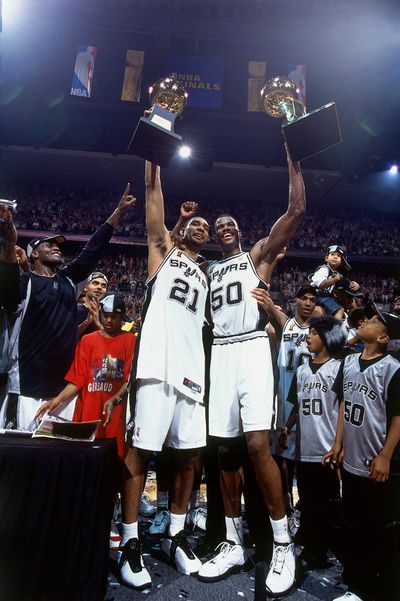
It’s the longshot of longshots, but if it’s happened to them, why can’t it happen to us?
It’s hard to have much in common with a team from over 25 years ago in a separate conference, but this year’s Philadelphia 76ers can see themselves in the 1996-1997 San Antonio Spurs. Whether the Sixers can build a dynasty like the Spurs did from that season hinges on lottery balls and competence.
The ‘97 Spurs employed David Robinson, a one-time MVP, multiple-time MVP runner-up, and all-around dominant center. Just six games into the 96-97 NBA season, he fractured his foot and would sit out the rest of the campaign. The team would win just 20 games, the third-worst record in the league.
Lucky for them, in the 1997 NBA draft, a prodigy awaited. Tim Duncan. Lucky again, the Spurs won the lottery (the Sixers earned the second pick, but that’s another story). Two seasons after that, they won a ring with Duncan and Robinson. Then, on the back of Duncan, they won four more rings in the early 2000s, made the playoffs for 22 straight seasons, and became renowned as one of the most well-run franchises in the league.

Photo by Nathaniel S. Butler/NBAE via Getty Images
The 2025 Sixers employ Joel Embiid, a one-time MVP, multiple-time MVP runner-up, and all-around dominant center. He’s been battling a knee injury this season, playing in just 19 games. Currently, the team has just 23 wins, the fifth-worst record in the league.
Lucky for them, in the 2025 NBA draft, a prodigy awaits. Copper Flagg. But the future lies ahead, currently unwritten. But like how the Duncan pick catapulted the Spurs into basketball immortality, this draft could be the prelude to a dynasty. Flagg has risen above his stacked draft class, and many pundits believe his skill and insane competitiveness will set whatever franchise drafts him for greatness.
A Duncan-level career is a massive ask and unfair to heap onto any 18-year-old. But with Flagg, unlike many other prospects, it’s possible. Seriously.
Here’s a report on Duncan before the draft, written by Philip Kasiecki: “He plays hard every minute, with confidence and emotion, at both ends of the floor, and he plays to win. He has a winning attitude that will greatly help the team that drafts him, going beyond what he will do that shows up in the box score. Duncan is the type of player who can lift his team with his play, as he can take over games at either end of the floor, and is the consummate team player.”
And here’s a report on Cooper Flagg, found on NBADraft.net: “A fierce competitor comparable to the greats in the game of basketball, who has been lauded for his intensity in games and practices. Can take over games and has displayed the ability to will his team to wins at times. Vocal and confident player who has shown the ability to considerably raise the level of every team he’s played on. Extremely mature and focused individual. NBA teams are certainly intrigued by the person as well as the player as he’s high character [sic] individual that teams can count on from a professional aspect.”
Flagg may be the Sixers’ only hope. There is great talent in the rest of the draft, but he’s a cheap and skilled four that would immediately increase the team’s current ceiling and give them a superstar for the future. Not to mention he’d inject some sorely needed ‘fuck you’ into this roster. Blessed be that series of events.
Duncan’s game and Robinson’s game are far more similar to Flagg’s and Embiid’s, but the franchises’ reigns can be in both their hands. A smooth transition from one to the next would be beneficial for all.
I’ve written before that Embiid’s historic usage rate (he’s second all-time) must dip if the team wants more success. Acquiring Duncan did just that for Robinson. In the seven seasons before his shortened 96-97 season, Robinson had a usage rate of 28%. In the six seasons with Duncan, he had a usage rate of 23.3%. In his final two seasons, he had a usage rate below 20%.
Of course, Robinson was a stalwart of health and physicality while Embiid may be on his final legs (or leg). And the Spurs, in hindsight, proved to be a franchise so competent that the idea of them transcended any one player, though Duncan played a massive part in personifying their ethos. The Sixers, on the other hand, have had a turbulent last decade and are looking at a bleak future if things don’t roll their way this offseason.
But rosters and previous success are similar. The Spurs did make a conference final in 1995, something the Sixers haven’t done in the Embiid era, but other than that, in every year since drafting Robinson, the Spurs were eliminated in the first or second round. The same fate the Sixers have met in every season since 2018. After drafting Duncan, the Spurs made 10 conference finals, six Finals, and won five championships.
On paper, the Sixers have a championship-level roster, one that paradoxically improved in this down season with the additions of Jared McCain, Guerschon Yabusele and Quentin Grimes to support Embiid, Tyrese Maxey, and Paul George. Add a Mr. Flagg to that group, and well, I don’t want to jinx anything. But history is there, even though it belongs to a franchise operating on another level of competency than the Sixers currently are.